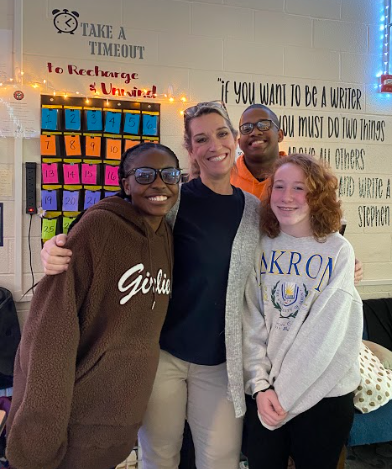Teacher’s stances implemented through student fights

March 8, 2023
Student fighting in recent years has drastically increased, and with teachers involved in the separation of student fights, many question when the right time is for teachers to step in and how they should do so.
In early February in Anson County, NC, a fight broke out between two Anson High School students, where each student was punching one another as a group of other students circled around. In an attempt to break up the brawl, Anson High School’s principal, Chris Stinson, situated himself between the two students, placing one in a chokehold.
The student and his parents contend that the principal’s action resulted in a significant lack of oxygen for the high school student, who later went to the Wadesboro Police Station and a nearby hospital for medical treatment. According to WSOC, the student “admits he was wrong for fighting,” but he and his family agree that Stinson “was also in the wrong” for doing what he did.
“I feel like, if [the fight] is avoidable, you shouldn’t touch the student, just because most people don’t like to be touched or, you know, pulled. [Physical interference] should only be allowed if they aren’t breaking up,” sophomore Madison Elsby said.
At SV, aggressive behavior, including physical fights like the one at Anson High School, is strictly prohibited, and an unyielding policy is in place.
“The policy on the first offense for the district is [a suspension of] zero to six days, the second offense is an automatic three to six [day suspension], and the principal of the administration can recommend a long-term suspension [for students who violate this policy],” SV Principal Dr. Michael Harvey said.
Students at UCPS schools are strongly encouraged to avoid physical and argumentative fights, which, subsequently, can result in a referral or a temporary to a permanent ban from school property. However, these outcomes are not to be preferred. In fact, according to the UCPS Code of Student Conduct, the “referral of students from the classroom for misbehavior should be avoided” and be a last resort option for teachers and school administrators.
“[Student fights and misconduct] should be prevented by putting the students that you see don’t like each other aside from each other. Not like making them work in groups together [or anything like that],” sophomore Milana Primachenko said.
When a physical altercation does break out, though, teachers are encouraged to handle these fights by breaking the sparring students up and by separating them without using an unacceptable amount of force.
“First of all, I think the best advice for teachers is to try to de-escalate any situation that could potentially turn into something aggressive. [They should] use verbal cues, call for help, [and] intervene without putting [themselves] at risk or in danger of becoming physically harmed,” Harvey said.
UCPS, according to the UCPS Code of Student Conduct, “recognizes that a key aspect of maintaining a healthy and safe environment is establishing order and maintaining discipline in our schools. This goal can only be achieved through the cooperative efforts of our school staff, students, parents/guardians” and the school environment.
“[Student fights] should be wrong, and [teachers] should not allow [them] to happen. If they see a [fight] happening, they should stop it,” Primachenko said.
In order to preserve tranquility in school environments, teachers are given de-escalation training concerning student fights, which can include trying to prevent worsening the tension present between fighting students and remaining calm, discussing a student’s misconduct after a physical or argumentative fight, and encouraging students to talk about their feelings rather than using their fists.
“There is some de-escalation training [and] non-violent crisis intervention training. It’s difficult for teachers because if you don’t do anything, you’re gonna get in trouble, and if you’re too physically aggressive, you’re gonna most likely get in trouble, too. So training teachers on how to intervene and with a proper way to restrain, if necessary, is important,” Harvey said.
In addition, these teacher intervention training sessions are there for a reason. In the moment of a physical fight, teachers can know how to react accordingly and can be the prevention of a future fight before it occurs.
“I haven’t really seen [a fight] or been in a fight myself, but I [think teachers would] separate the students, talk to them separately, and have them [be sent to another area] to calm down,” Elsby said.

